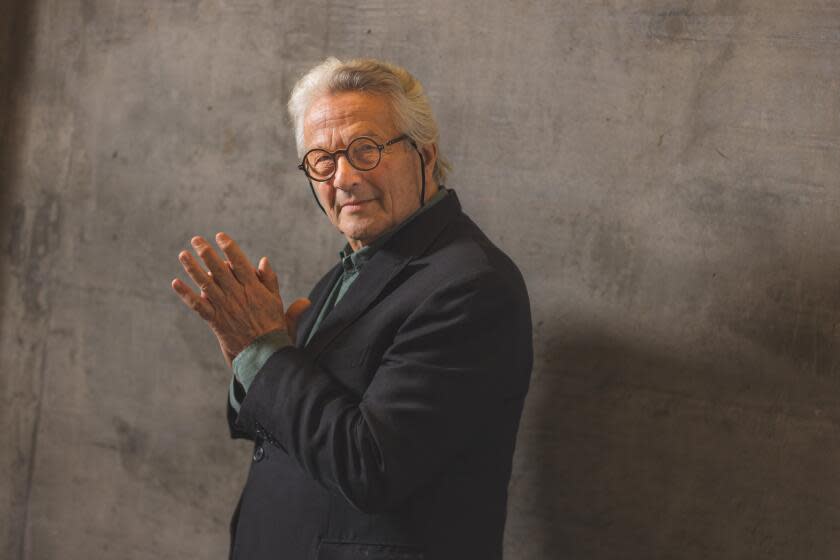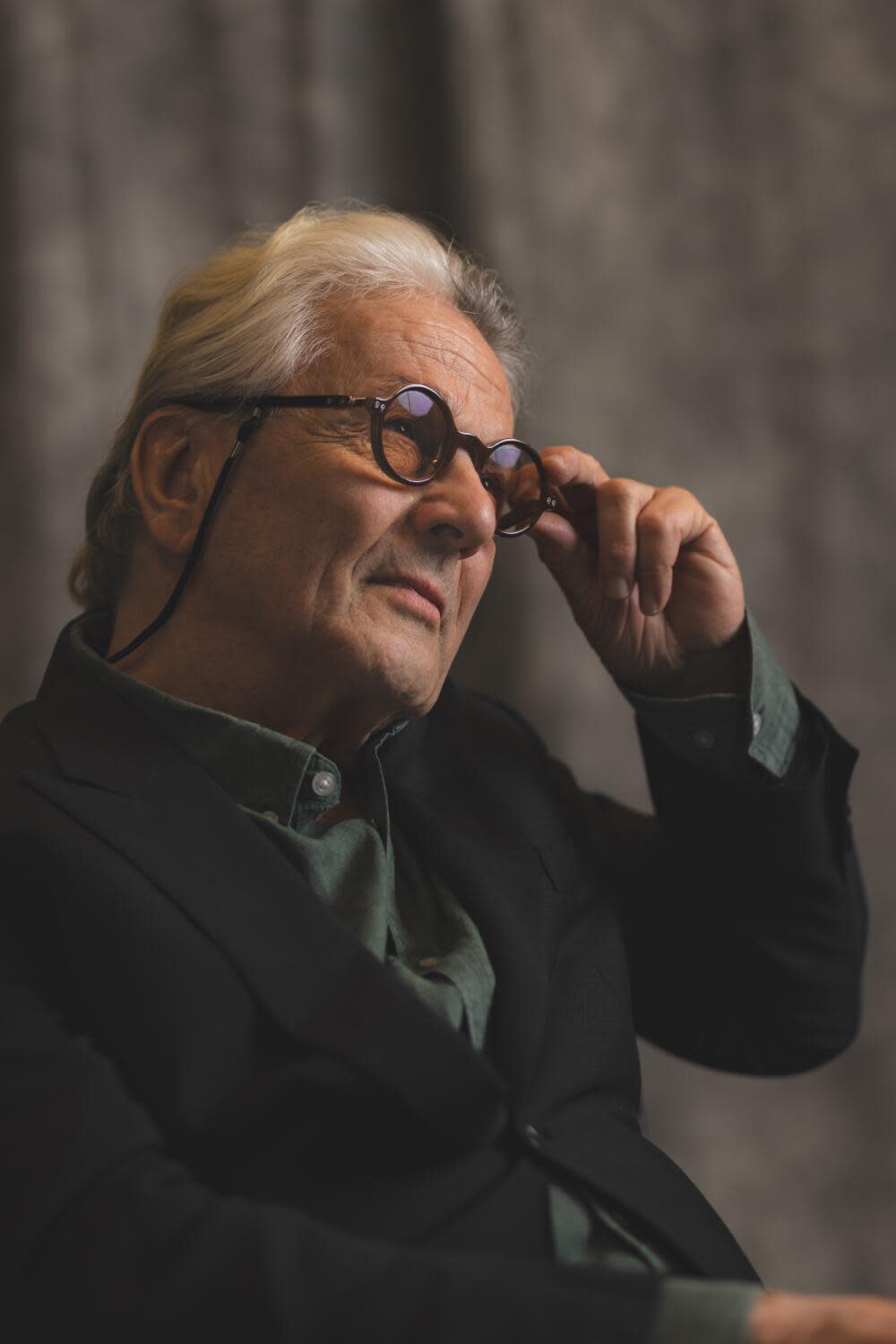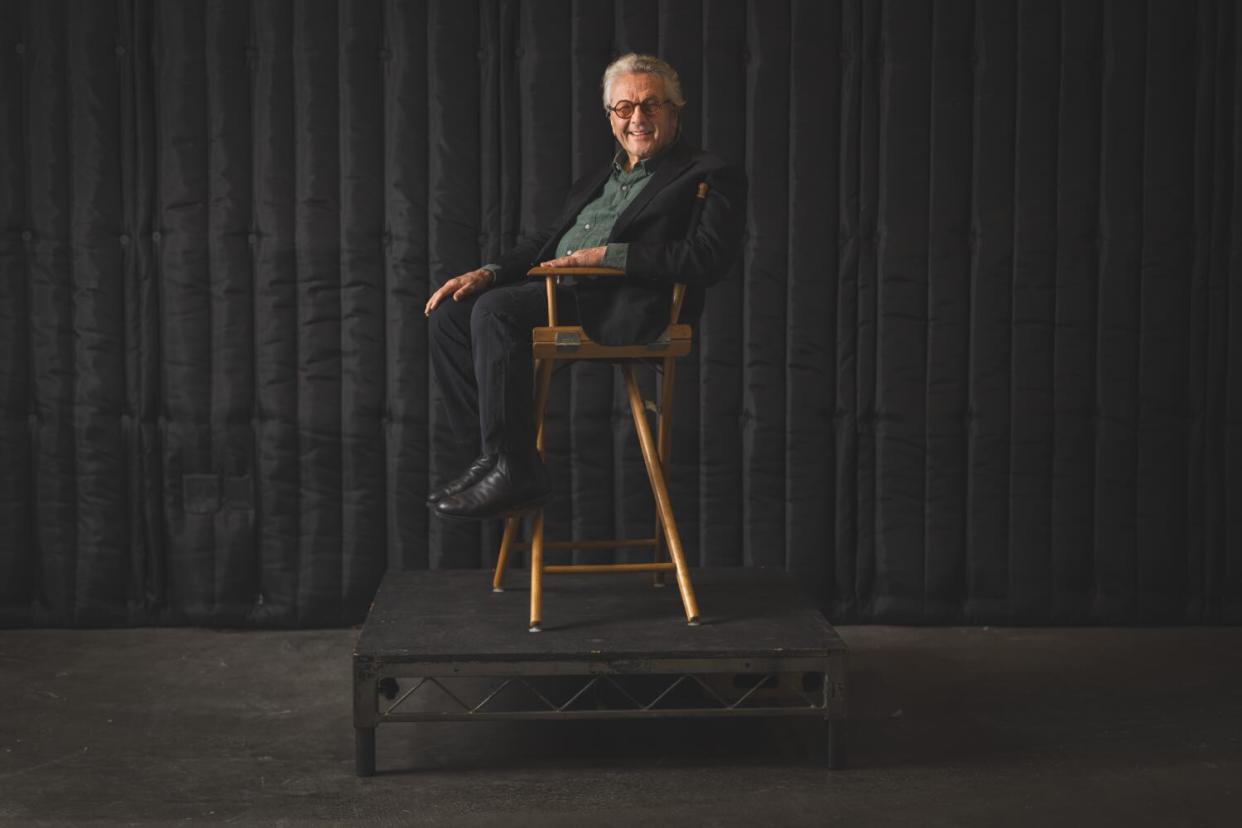We strap in with director George Miller, the 'Mad Max' mastermind, back with 'Furiosa'

For as long as he can remember, George Miller has been living large inside his head. “At the time I was young, people used to call it daydreaming — they’d say, ‘George, you’re a daydreamer,’” the filmmaker says, thinking back. "It was genuinely thought of as a pejorative. Then I realized its ultimately what I do.”
Beginning with his feature debut, “Mad Max,” in 1979 and continuing through this month’s “Furiosa: A Mad Max Saga” (the fifth film in a 45-year span and scheduled for a Cannes world premiere), Miller has daydreamed his way into a remarkable career, one that extends considerably beyond the dystopian Max universe.
For it’s hard to think of a director who’s had as much success creating such a diverse group of films. Miller earned Oscar nominations for co-writing both 1992's moving family medical drama “Lorenzo’s Oil” and the unexpectedly successful pig-of-destiny adventure “Babe.” In addition, Miller co-wrote and directed the lighthearted “Happy Feet,” winner of the animated feature Oscar, and was at the helm of the wildly violent “Fury Road,” the 2015 Mad Max film that took six of the 10 Oscars it was nominated for.
Could anything unite these various films? Miller thinks so.
“It’s story — story rules, as we all know,” he says without hesitation. “I’m definitely addicted to story. It’s a life-long habit, looking for stories with a lot of iceberg under the tip.” More than that, Miller feels “we are hard-wired for story. The underlying elements are all sensed intuitively.”
Discursive but never dull, his hair swept back and his glasses tinted orange, the 79-year-old Miller is ruminative and reflective, kind of like your favorite college professor, the one whose classes you’d never miss. “I’ll try to be succinct,” he says, smiling, “but it’s not my strength.”
Obviously, there is a lot more going on with George Miller than a passion for story. To be in the grip of “Furiosa,” over 2½ hours of propulsive narrative and eye-widening stunts starring Anya Taylor-Joy and Chris Hemsworth, is to be aware that Miller is also very much a hands-on, detail-oriented director. “I know every image, every gesture, literally every frame,” he says.
Miller's gift for action and adventure is very much on display in "Furiosa." We see the preteen Furiosa kidnapped from the Green Place by followers of the dangerously bombastic Dementus (Hemsworth), watch as she maneuvers her way to a degree of independence as Dementus confronts the equally evil Immortan Joe (Lachy Hulme), ruler of the Citadel, and hold on for dear life as she and way-cool War Rig driver Praetorian Jack (Tom Burke) defend themselves against one of the caravan attacks that are Miller's specialty.
The director's intense absorption in his characters has some unexpected side effects. “After, say, six months of filming and a year in the cutting room, by the time you’re finished you see these people only as their characters,” Miller explains. “So when we gather for publicity and I see a person like Anya, who in real life has long blond hair and dresses very stylishly, it’s shocking, a stunning moment for me. I’ve been immersed in an alternate reality for more than a year, and I have to decompress.”
Miller’s focus on “Furiosa” was especially intense because it’s a detailed prequel to the “Fury Road” story he knows intimately, with Taylor-Joy playing the young survivor whose savage early life turns her into Imperator Furiosa (Charlize Theron in the previous film.) Furiosa’s early history is gone into in such specificity that a younger actor, 14-year-old Alyla Browne, plays her in the film’s first hour before Taylor-Joy even shows up.
In fact, Miller explains, before “Fury Road” could be filmed, his working method demanded that the outline of what, years later, became “Furiosa” had to be worked out in detail in his mind.
“‘Fury Road’ takes place over three days, and in order to tell a story which happens in such a compressed time span, we had to really understand everything in this world,” Miller says.
“The characters like Immortan Joe couldn’t just appear screen left. We had to know where they came from, how that world came about, why, for instance, found objects had be repurposed. All that was a tool, and when ‘Fury Road’ got traction, when we could see how the film impacted the culture — something that used to take about 10 years to find out but now, like everything else, was accelerated — we thought about that story and said, ‘Let’s give it a shot.’”
Casting of the film’s two leads then fell into place. Fellow Australian Hemsworth, who plays Dementus, leader of the massive Biker Horde, was someone Miller knew, while Taylor-Joy had the benefit of good words from director Edgar Wright, who’d worked with her in “Last Night in Soho.” Says Miller, “She really struck me as having a mysterious, essential — in the sense of essence — quality, a sort of timelessness," says Miller. "Also, for someone very young, she was very resolute, with a sense of rigor, even ferocity.”
In addition to story and casting, something else is important to Miller: the mechanics of filmmaking. “I’m always interested in doing something that is new and fresh to me, not only the content but the tools we use,” the director says. Because “the technique of cinema is always changing,” Miller offers multiple examples of how the ability to employ up-to-the-minute technology impacted the making of many of his films.
“The first ‘Babe’ was made at the dawn of digital technology, which I wanted to use to make the animals talk," he recalls. "Warner Bros. said ‘We’re not interested,’ but Universal, which had just made but not yet released the first ‘Jurassic Park,’ said ‘We know what you’re trying to do.’"
Several years later for Miller's "Happy Feet," another technological breakthrough led the way. Miller's "Babe" cinematographer, Andrew Lesnie, was just coming back from a gig on “Lord of the Rings: The Fellowship of the Ring," and had something to share. "When he came back, he showed me the first motion capture clip of Gollum," Miller remembers, "I’d never even heard the words, but I said, ‘That’s how we make all the penguins tap dance.’”
For both “Fury Road” and “Furiosa,” Miller says he “saw the opportunity to be able to do a very kinetic film and do it in a way that was much safer than you could do it in the past.” The actors and stunt people could wear harnesses that would be removed digitally and “digital cameras were much smaller and more agile and could even shoot in the desert."
Also with digital, "you could easily erase as many footprints as you’d like," he says, noting that it wasn't as easy for the crew of the 1962 desert epic "Lawrence of Arabia," a movie about which he knows a lot. "To do another take, they’d first brought in helicopters to blow the sand but that didn’t really work. Then they used a very big version of a powder puff on a high pole.”
Given how successful a filmmaker he’s became, it’s surprising to learn that Miller was not one of the legion of film-struck kids. Rather he and his twin brother John, growing up in the small rural town of Chinchilla, Australia, "were constantly doing things with our hands.” The brothers went to medical school together (John recently retired after 50 years of practice) and “as I worked as a doctor I was constantly doing things with my hands. And now, as a filmmaker, I do nothing with my hands, not one thing. It’s really strange.”
Gradually intrigued by film, Miller made a prizewinning short while still in medical school and was influenced in terms of style by reading Kevin Brownlow’s exceptional 1968 history of silent film, “The Parade’s Gone By.”

“I saw that the real language of cinema, the syntax used, was basically defined in the silent era,” he says. “I agree with Hitchcock, who said, ‘I want to make films where they don’t have to read the subtitles in Japan.’”
Miller’s breakthrough, the Mel Gibson-starring “Mad Max,” is famously set in the lawless future that has characterized all the following films up to and including “Furiosa.” But the director reveals that the decision to take “Max” out of the present was made because “it was cheaper to shoot that way. We set out to make a film that was very kinetic, and without a budget you can’t close off streets, hire extras or get cars. But if we set it in the future, we could use run-down buildings and derelict cars and we didn’t have to close streets. Doing it that way was accidental, purely out of necessity.”
Miller describes the universe featured in “Furiosa” as “a world in extremis, no question, where the conflicts are very elemental. We call it the inverted world. By and large the world we live in — at least on the surface — works fairly smoothly. For instance, every time a big jet lands after flying over a city it’s the result of invisible cooperation, almost to the point of altruism, that those who live below the airplane’s flight pattern take completely for granted. In the inverted world, people behave in dark ways. One human’s regard for another is the exception and gestures of positive regard are the rare thing — a little ray of light.”
Read more:The Ultimate Summer Movie Showdown Week 3: George Miller takes us down 'Fury Road'
Given its brutal nature, the filmmaker was “definitely surprised” by how well the first “Max” did at the box office but still thought medicine was his future. “Despite its unexpected success, I just didn’t think I was cut out to make movies," he says. "I thought, ‘Well, I gave it a shot.’”
What changed his mind was the realization, as reviews from around the world came in, that “inadvertently we’d stepped into an archetype, the kind of allegory American Westerns were for so many years. The Japanese saw him as a samurai, the Scandinavians as a lone Viking, the French called it ‘a Western on wheels.’ That led me to not only how to tell stories but also to the why. Once you have that world in your head, even when you’re trying not to, you keep coming back.”
Miller stayed registered as a doctor for a few years so he could be the on-set physician on his own films, which meant, he mischievously recalls, “all my lunch times were taken up with people who’d had insect stings.” But though he let his license lapse in 1982, Miller’s medical background has stayed with him in ways large and small, so much so that he says he wouldn’t be making movies had he not been a doctor.
It's not only on a micro level, the way dusk-to-dawn shooting reminds him of long nights in the ER. "Working as a resident in a big-city hospital, I’d be woken up at 3 a.m. to assist at an emergency surgery," he says. "You have to work optimally in extreme situations with no margin for error. That’s exactly what happens in night shoots.”

More significantly, Miller feels the most crucial knowledge he acquired in medicine was the importance of building a successful team. “In the first ‘Mad Max,’” he explains, “there were 30 people in the on-screen credits. In “Furiosa” there are a thousand in the practical area and another thousand in the digital, working all over the world. Bringing them together is the challenge."
Miller remains awed by the efficiency of hospital teams. “I got reconnected to the medical world in recent years and I found a really brilliant surgical team in Sydney, and I was really interested in why it worked so well," he says. "It’s not just a surface thing. There’s something deep in the culture of the making of the team. There are no silos, everyone knows what everyone else is doing, information flows freely in every direction. And there is no rigid hierarchy. The cleaning staff matters as much as the anesthesiologists. Just like in film, it’s important to work with common purpose.”
Filmmaking being such an exhausting occupation, Miller’s answer when asked what he does to relax was a surprise. “For me, I guess I’d say my default position is to be relaxed. Having a shower, going for an amble —an amble, not a walk — to the local shops, you free the rational mind and you go into a free-association state. You surrender the intellect to intuition."
"Fury Road," he says, came to him when he was flying back from Los Angeles to Sydney. "Two-thirds of the story had played out by the time I fell asleep somewhere over the Pacific," Miller says. "In every moment of human creativity, in every endeavor where people solve problems, even Albert Einstein at Princeton going out sailing in a little boat when the math became too granular, I’ve learned it’s the same. Just doing things that allow you to retreat into your imagination is the thing.”
This story originally appeared in Los Angeles Times.
